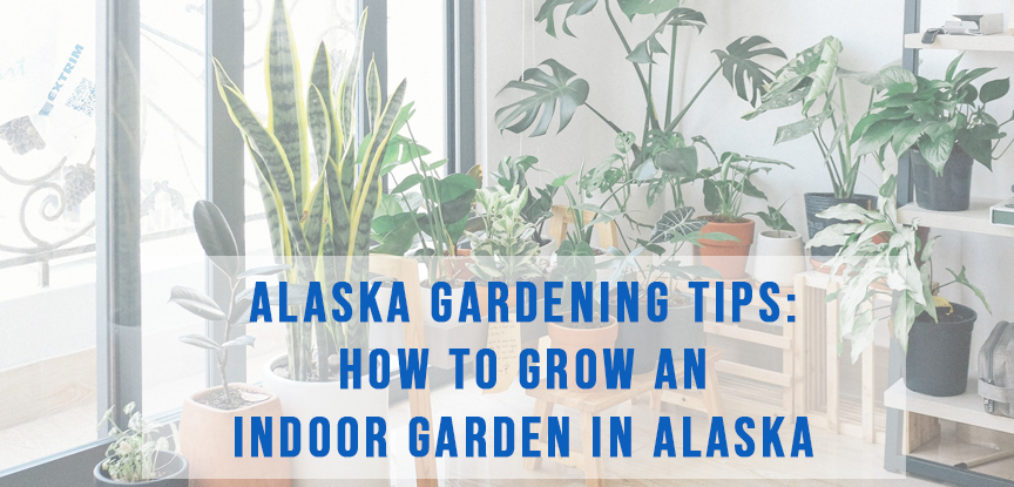
Alaska gardening tips: How to grow an indoor garden in Alaska
While it might seem like a better time to be cutting wood instead of planting seeds, gardeners in Alaska don’t need to give up when the first cold snap hits. Clear some space inside your home, follow our tips, and you can enjoy an indoor garden all winter long. (Parents – this is a great idea for restless kid projects during the winter, too!)
Fresh vegetables, herbs and greens can all be grown inside without having to invest in fancy greenhouses or taking up all your living space. Whether you live in an apartment or a spacious home, you can indulge your love of gardening and fresh foods easily with an indoor garden.
First thing you need to do is choose a space. Decide if you can fit only a few small pots in windowsills, or a large arrangement with shelves and special grow lights in rooms dedicated to winter gardening inside. Once you know how much space you have, then you can choose what edibles to grow.
There are a lot of options for growing in an indoor garden in Alaska, including herbs, sprouts, microgreens, tomatoes, kale, lettuce, and carrots.
How to Grow Edibles in an Indoor Garden
To grow edibles inside your home during the winter, you’ll need to start with the right supplies. Here’s a quick checklist:
- Lights: You’ll need the right light for your plants to grow. If you have a window that gets at least 6 hours of strong sunlight that will be enough for herbs and smaller plants. If you want to grow more, however, you’ll need to invest in some grow lights. What kind and how many you need depends on how many containers and the space they will need to cover. Check with your local home and garden store and they will be able to help you decide what’s best.
- Containers: Small round pots are good for windowsills. Larger pots can be set up under grow lights. If you’re using shelving to maximize space, you’ll want rectangular boxes to fill the shelves. As for what size you’ll need: Growing herbs or microgreens requires containers at least 4-6 inches deep. Carrots, tomatoes and other vegetables need at least 10-12 inches or more. You’ll also want to invest in plastic trays to put under your containers to prevent water leaks and damage.
- Soil: Use organic, all-purpose potting mix for indoor gardens to avoid bringing in insect pests or other potential problems from your summer garden.
- Seeds or starter plants: Most vegetables and greens can be grown from seeds quickly and inexpensively. Herbs, however, mature very slowly, so start with an already-growing plant if possible.
Be sure to set up your indoor garden in a cool part of your home, not too close to heat sources such as fireplaces or woodstoves as the intense heat can cause them to grow too fast and not mature correctly.
Follow directions for watering and fertilizing just like in an outdoor garden. Adjust lights as plants grow. Seedlings may need up to 12 hours of light each day to mature. It’s a good idea to use timers so you don’t forget.
Most leafy greens, herbs, and some root vegetables will grow well in indoor gardens. Here is a quick list of what we’ve seen people grown here successfully:
- Bok Choy
- Carrots
- Herbs
- Lettuce
- Microgreens
- Radishes
- Scallions
- Spinach
- Swiss Chard
- Cherry tomatoes
- Peppers
Once you start harvesting, enjoy your herbs and vegetables in soups, salads and snacks for a fresh, healthy and fun way to stay busy during the long winter months.


